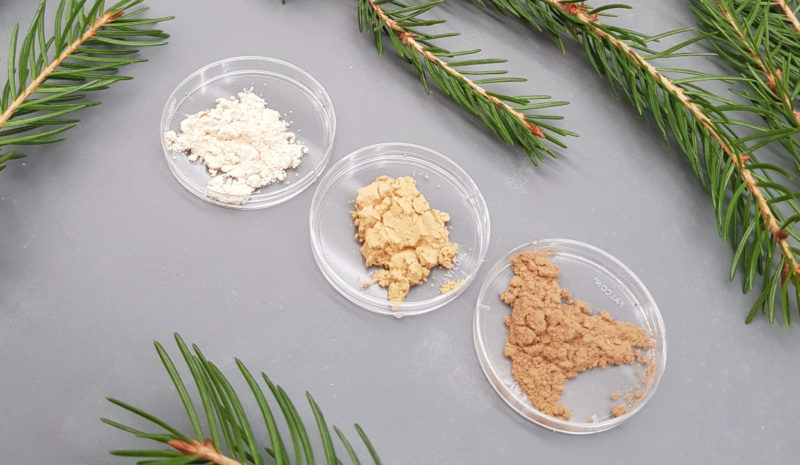
Spruce gum, derived from Norway spruce, can be used to stabilize emulsion-based food, cosmetic and pharmaceutical products. The substances used for this so far include gum arabic and guar gum. Birch gum has also been studied for the purpose and found to be suitable.
‘Research shows that both are good and usable options for both food and cosmetic products where water and fats are mixed, the way they are in salad dressings. Their chemical structure is very similar to that of other stabilizers,’ says Kirsi S. Mikkonen, Associate Professor of Food Science at the University of Helsinki and Research Fellow of the Academy of Finland.
Spruce gum is a type of hemicellulose, one of the constituents of wood, which has so far mostly ended up being burned at pulp mills. The potential to use sidestreams of pulp manufacturing for producing useful materials is increasing, now that pulp mills are more energy efficient and there is less demand for energy derived from burning sidestreams.
About one quarter of wood consists of hemicellulose. Spruce gum is the hemicellulose found in spruce and is also called galactoglucomannan.
Stabilizers are used in food and cosmetic products to achieve the desired consistence. They are also used in bio-based films, fillers and in chemical industry products. In paints, for example, spruce gum keeps the consistence stable before use.
‘We are highly convinced that there are no harmful compounds in spruce gum. However, to be sure of its safety we need to carry out cell culture tests and animal model tests,’ Mikkonen says.
Food industry has expressed an interest in using spruce gum. So far, however, it is not available in sufficient quantities for industrial use.
Mikkonen knows that tree hemicellulose is also researched in other forestry countries besides Finland. ‘But this is a topic of global interest, since hemicellulose is present in other plants as well.’
Tree hemicellulose has been problematic because it has been difficult to separate it from the rest of wood profitably. A particular problem is how to integrate the separation process with other industrial processes.